Most of the combat troops were Special Forces soldiers deployed deep into hostile territory as combat multipliers.
Their mission was to train indigenous troops to fight the Viet Cong guerillas.
It was messy, horrible work in incredibly dangerous spaces.
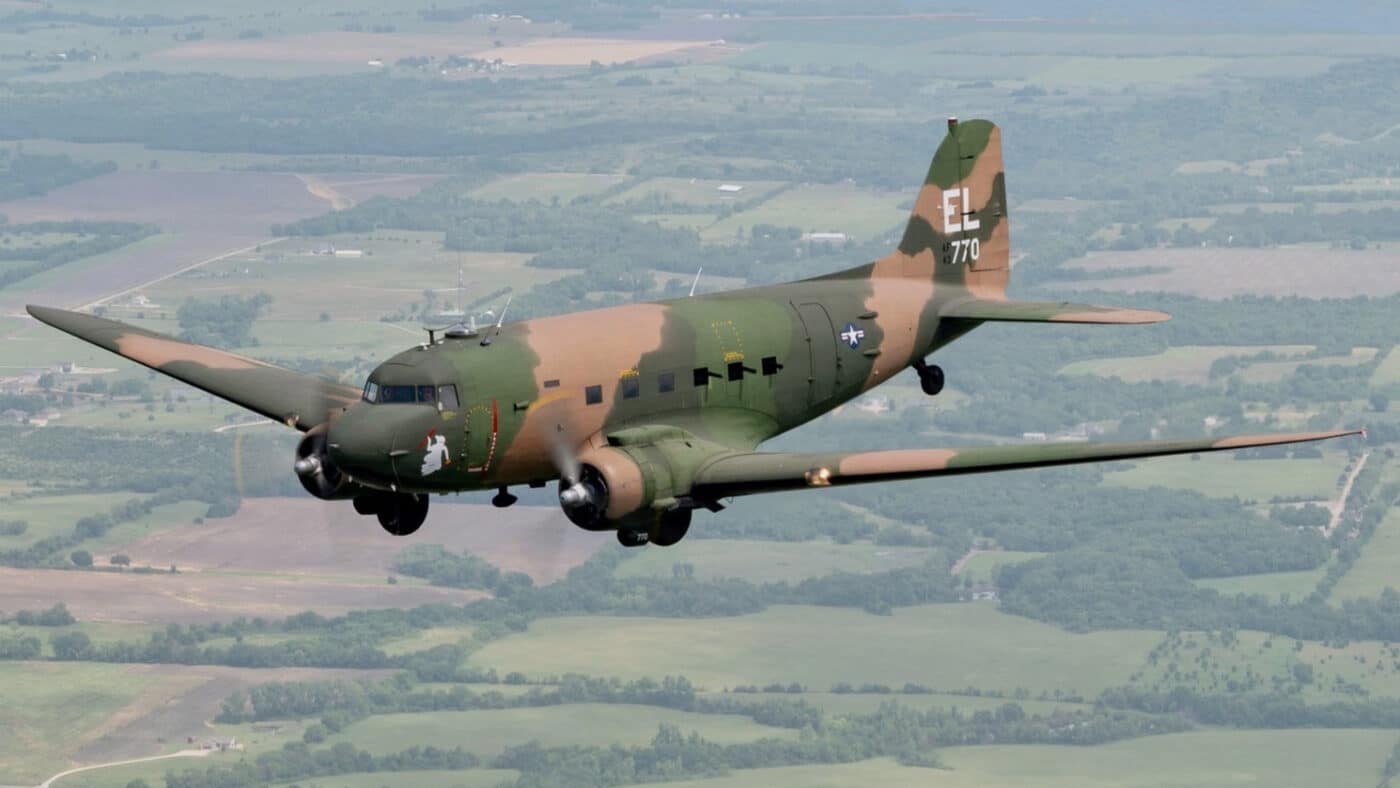
The Douglas AC-47 Spooky was a true life saver. From Special Operations units in the field to firebases being overrun, these planes could break the back of a communist attack. Image: U.S. Air Force
A saving grace was the ready availability of American air support.
The VC were desperate to crush these interlopers before they could gain a solid foothold.
The stage was set for an epic scrap.
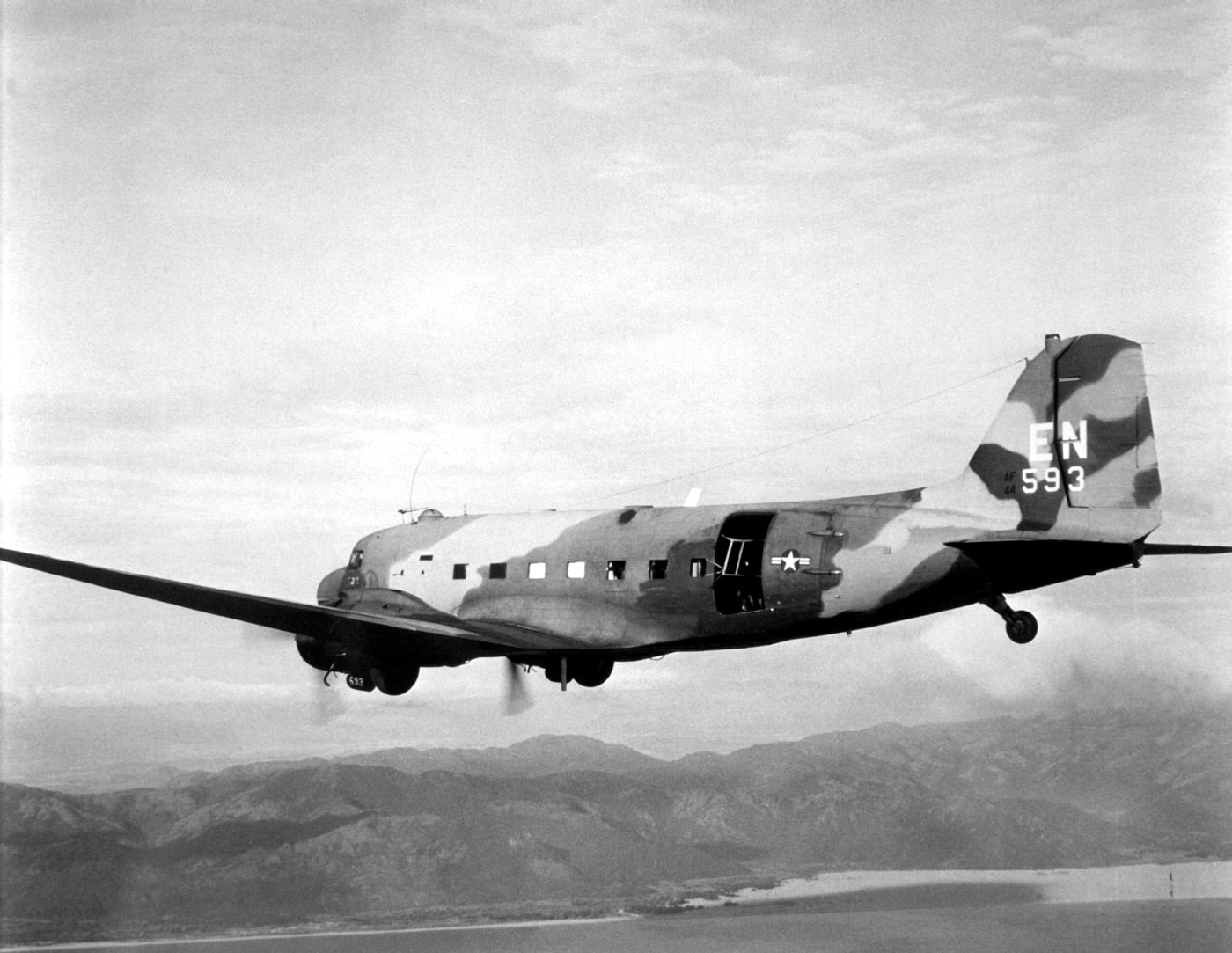
The U.S. Air Force AC-47 Dragon aircraft flew missions over South Vietnam in support of allied outposts and troops in the field. Image: U.S. Air Force, circa 1967.
What had begun as an apparent harassment and probing attack was rapidly evolving into something altogether worse.
Charlie owned the night, and he knew it.
Things were looking bleak.
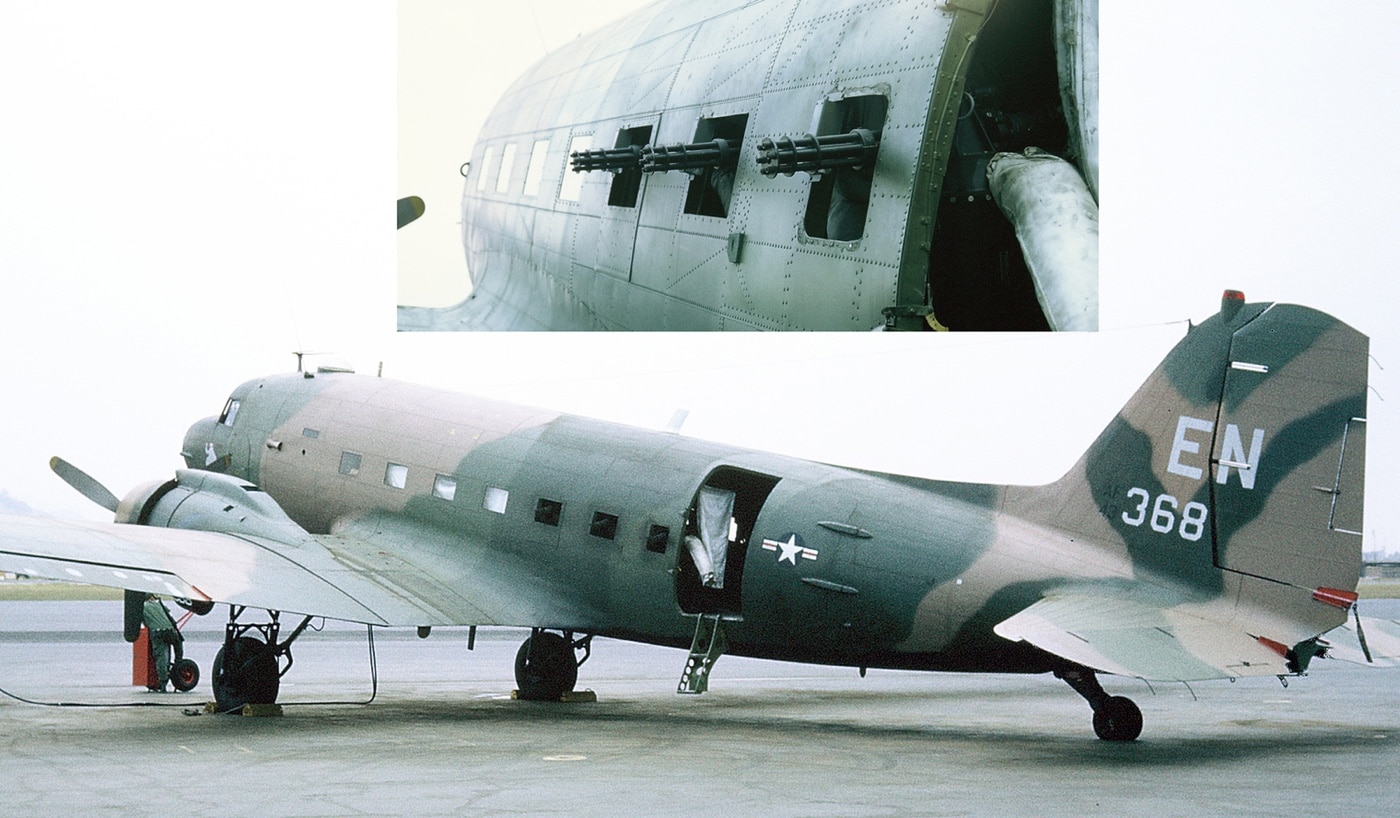
U.S. Air Force AC-47 gunships’ miniguns (inset) provided critical fire support for air base defense. AC-47 crews also dropped flares to reveal the enemy at night. Image: U.S. Air Force
The American defenders, like the VC they were facing, were more accustomed to jets.
All involved were put a bit off balance by this new development.
Crouching in the jungle, the ample VC attack force was poised for its final push.
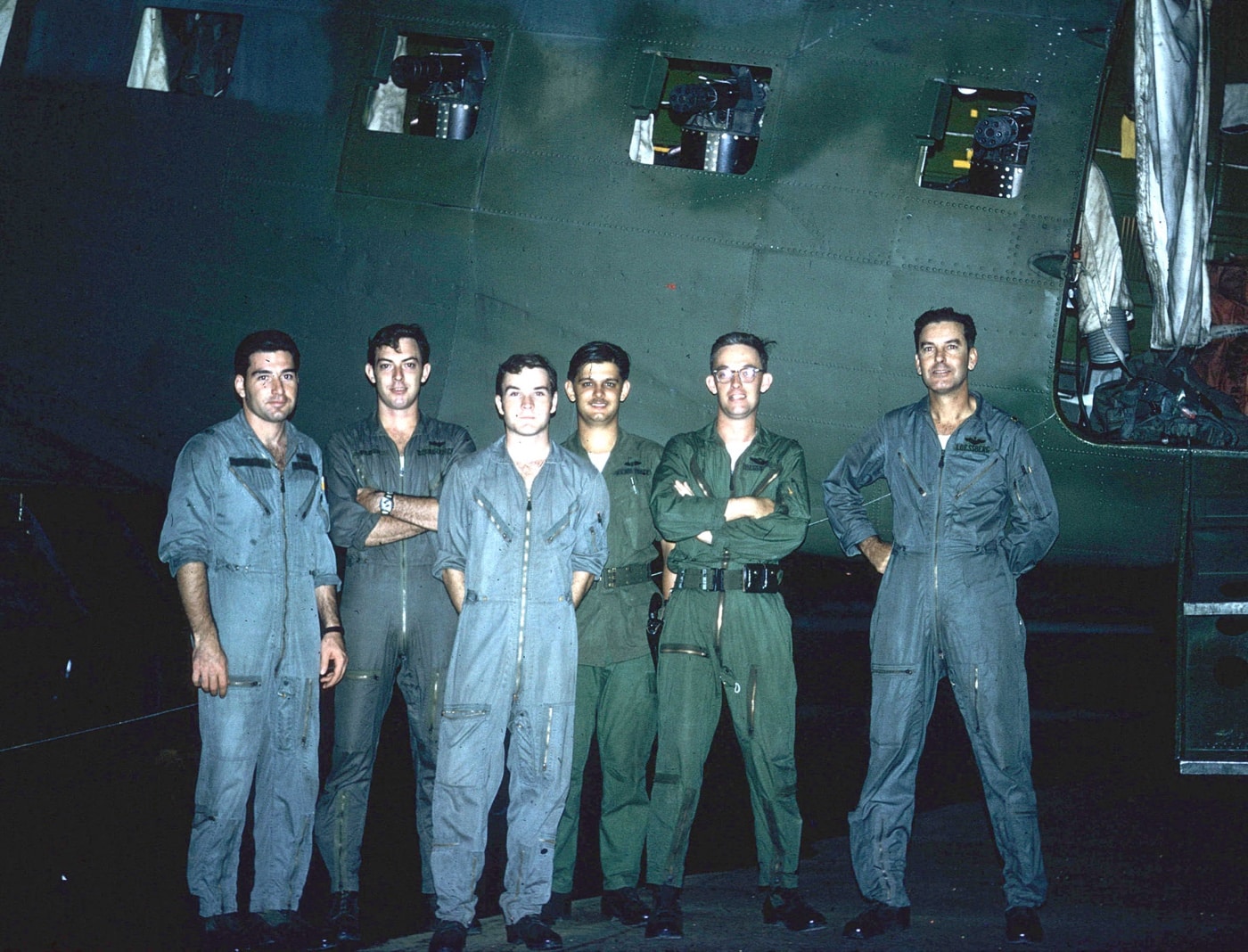
An AC-47 crew stands underneath the guns of their aircraft. A typical Spooky crew included the aircraft commander, pilot, navigator, flight engineer, loadmaster and two gunners. Image: U.S. Air Force
By dawn, the VC commander expected to see his communist flag raised over the American command bunker.
And then everything changed.
Suddenly and without warning, .30-caliber machine gun rounds began sleeting from above like a deluge.
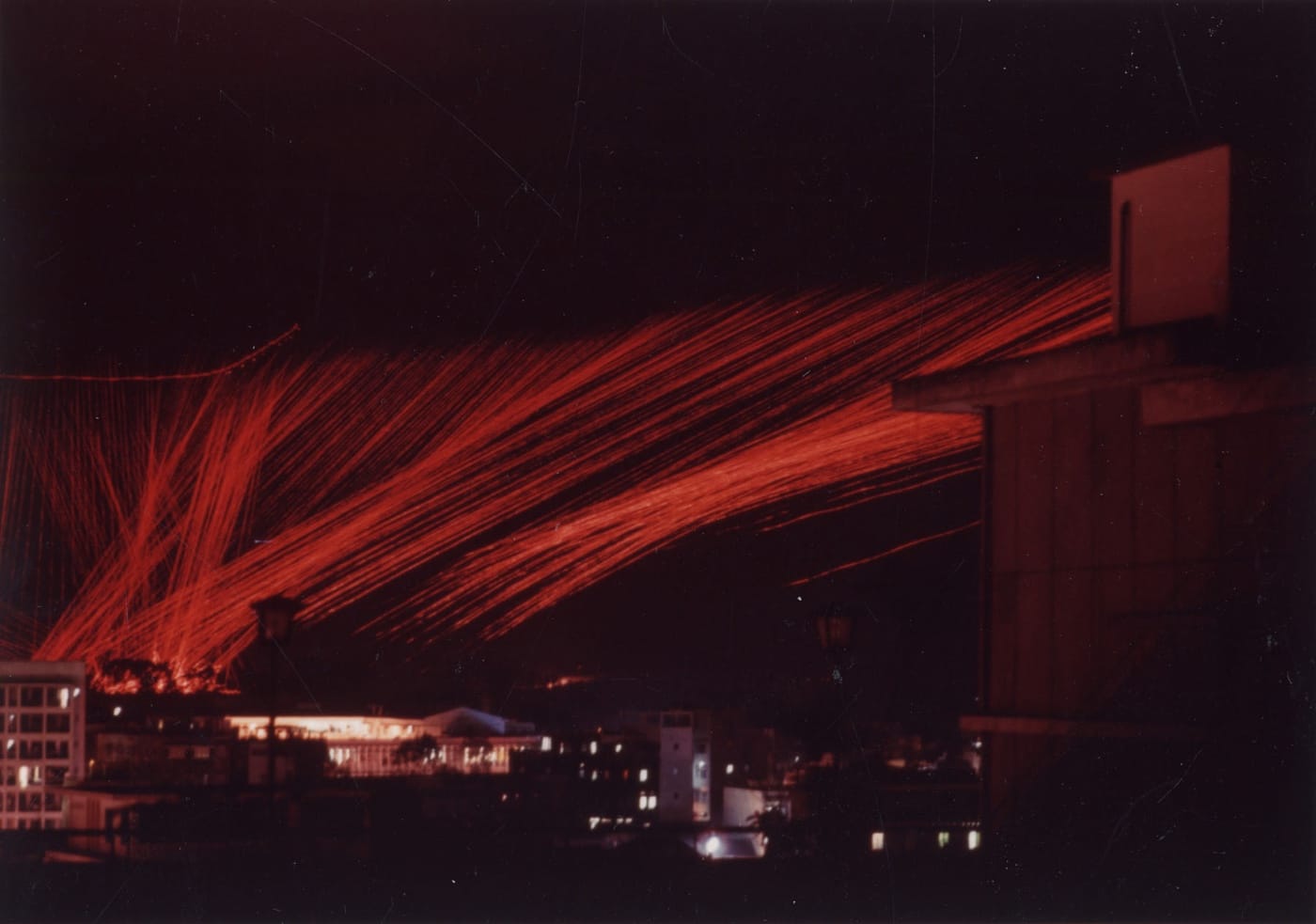
Time lapse photograph of an AC-47 helping defend Tan Son Nhut Air Base during the enemy Tet Offensive in 1968. Image: U.S. Air Force
In moments the orbiting aircraft had expended some 4,500 rounds and broken the back of the VC attack.
Charlie had just gotten his first rude introduction to Puff, the Magic Dragon.
The first testbed was actually Project Tailchaser under the command of Air Force Captain John Simons.
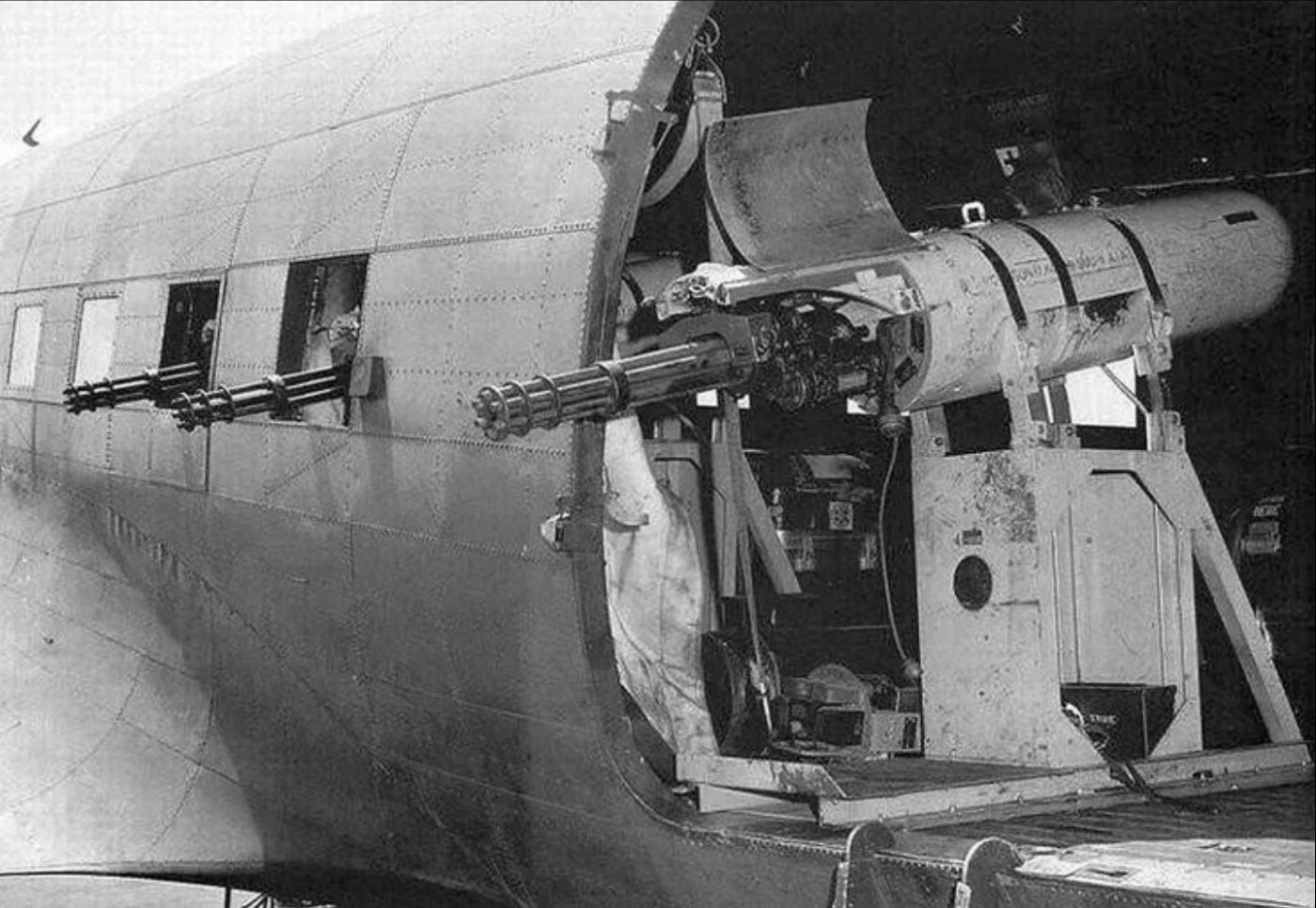
Three GAU-2/A rotary machine guns were mounted in a C-47 to transform the plane into a gunship. The GAU-2/A was the Air Force name for the General Electric M134 Minigun. Image: U.S. Air Force
In practice, the concept was effective beyond their wildest expectations.
It really all came down to physics.
With the minigun fixed in place firing out the left and at a downward angle, Cpt.
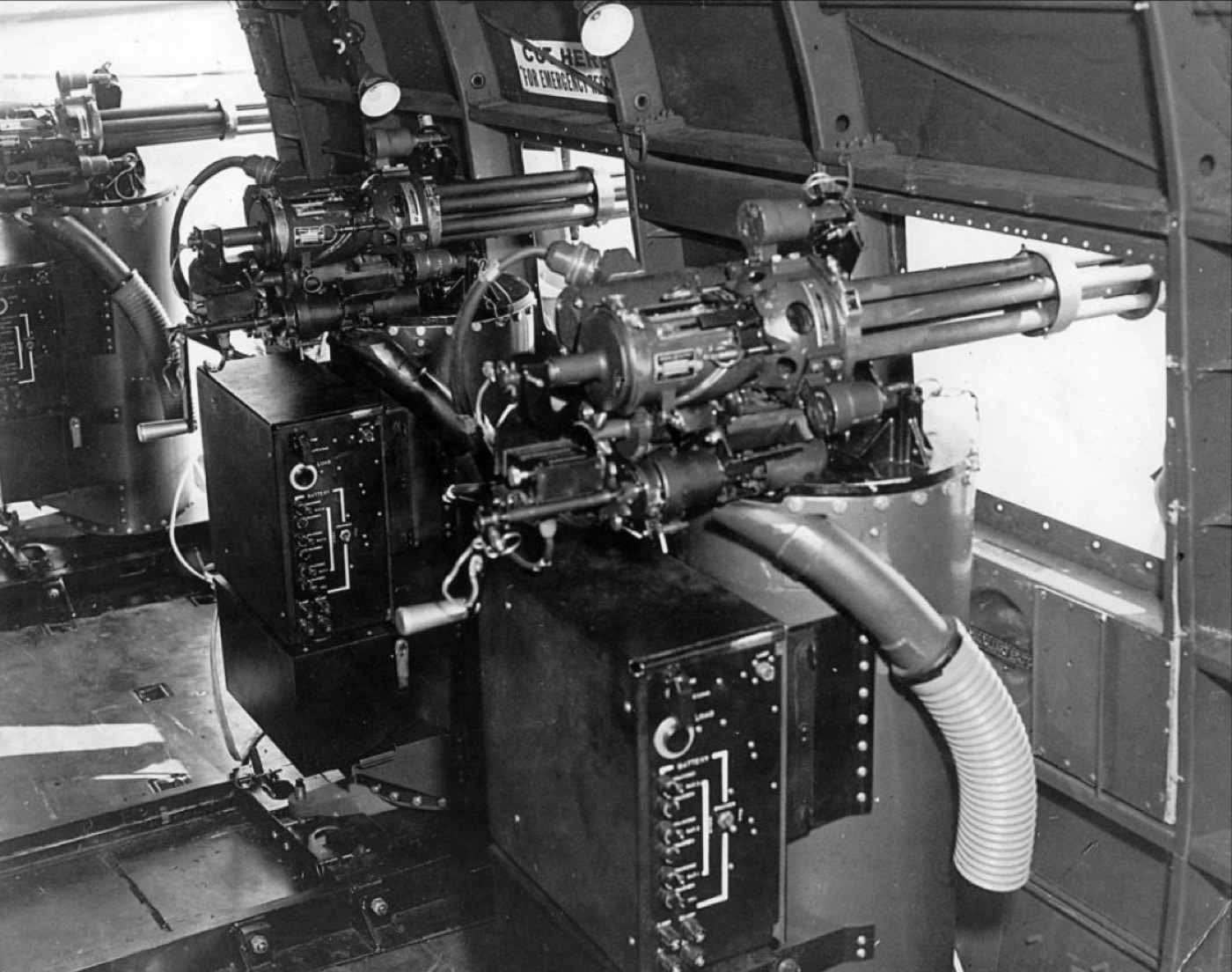
This interior view of an AC-47 shows improved mounts for the GAU-2/A miniguns. In addition to easy-to-operate control panels, they had dedicated “brass exhaust” plumbing. Image: U.S. Air Force
He then fired the weapon and made a grease pencil mark on the side windscreen where the bullets struck.
By some basic pilotage he could adjust the fall of his rounds based upon how he orchestrated his turn.
The success of that test led to the subsequent Project Gunship in October of 1964.
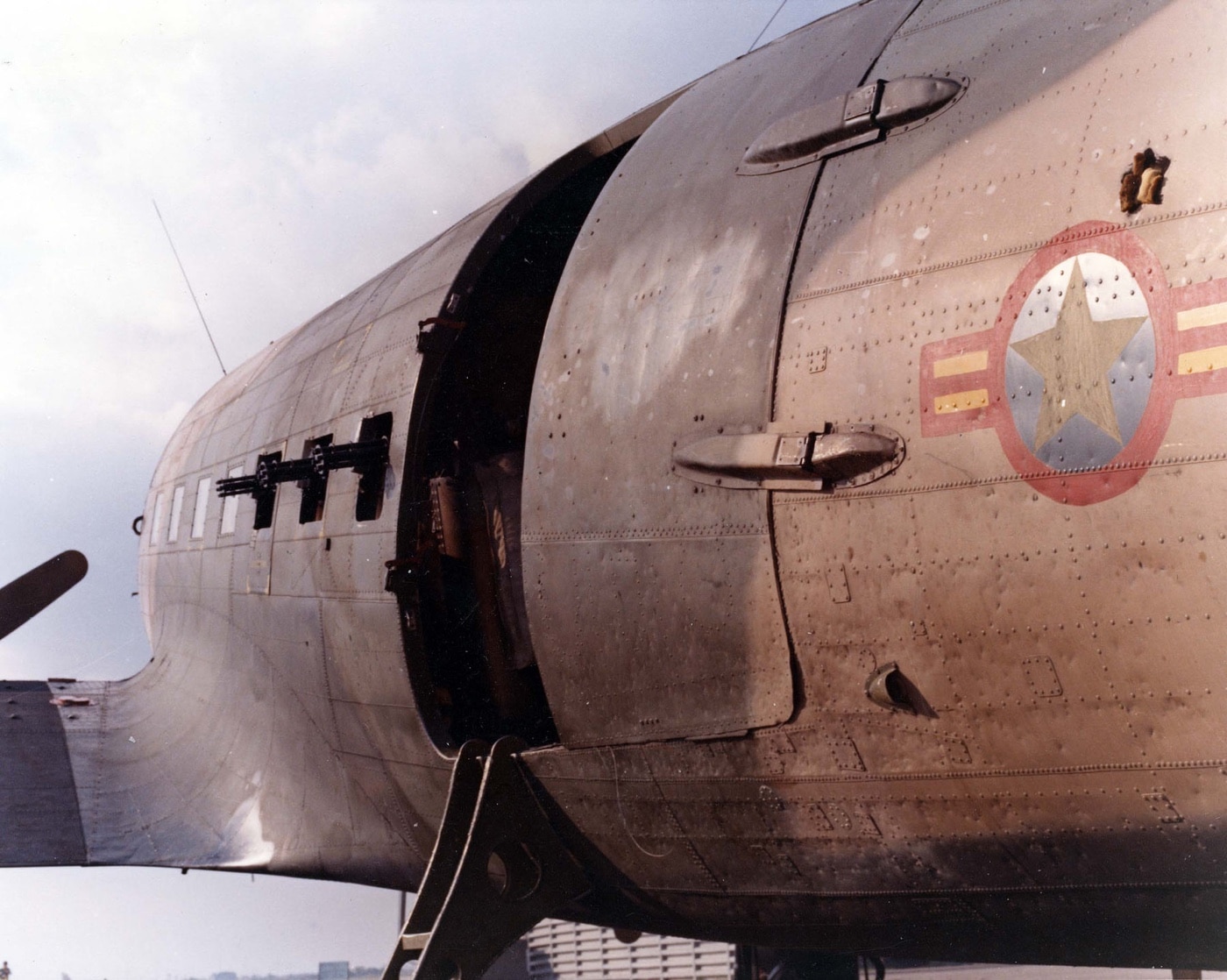
Spooky gunships were provided to the South Vietnamese Air Force as part of President Richard Nixon’s policy of “Vietnamization”. Image: U.S. Air Force
Project Gunship involved mounting three miniguns in the cargo compartment of a Douglas C-47 Skytrain.
The C-47 Skytrain was the same lumbering cargo aircraft that took American paratroopers intoNormandy on D-Day.
Initial tests involved simply securing standard external minigun pods in place with tiedown straps.
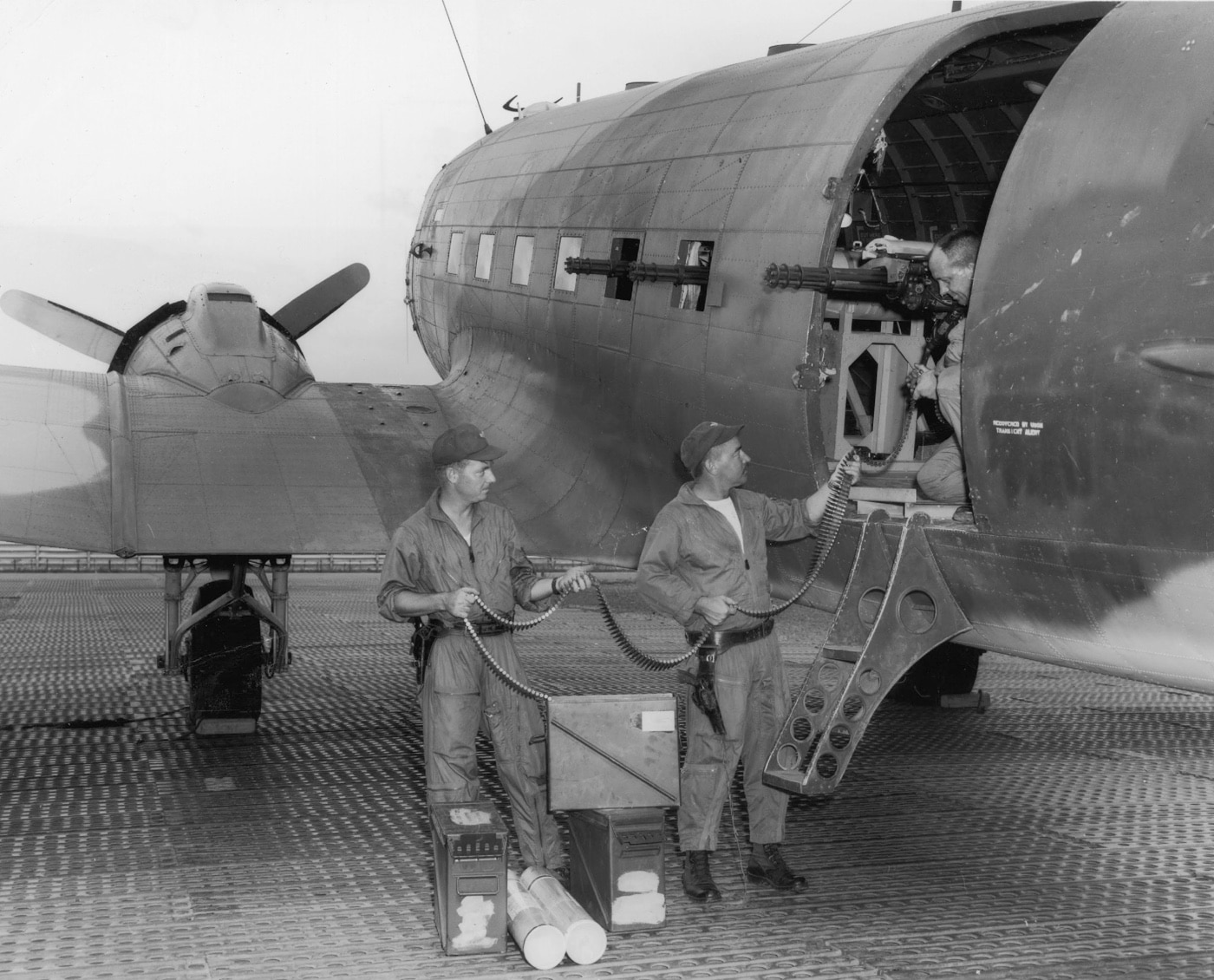
Staff Sgt. John Boineau, Staff Sgt. Carl Starwalt and Master Sgt. Norris Johnson prepare three 7.62mm cannons inside an AC-47 Dragon-ships for a mission during the Vietnam War. Image: U.S. Air Force
Later versions used improvised and eventually standardized fixed mounts.
At its maximum cyclic rate this improvised gunship spewed some 300 rounds per second.
With a little practice, the subsequent bang out-classified AC-47 was devastating.
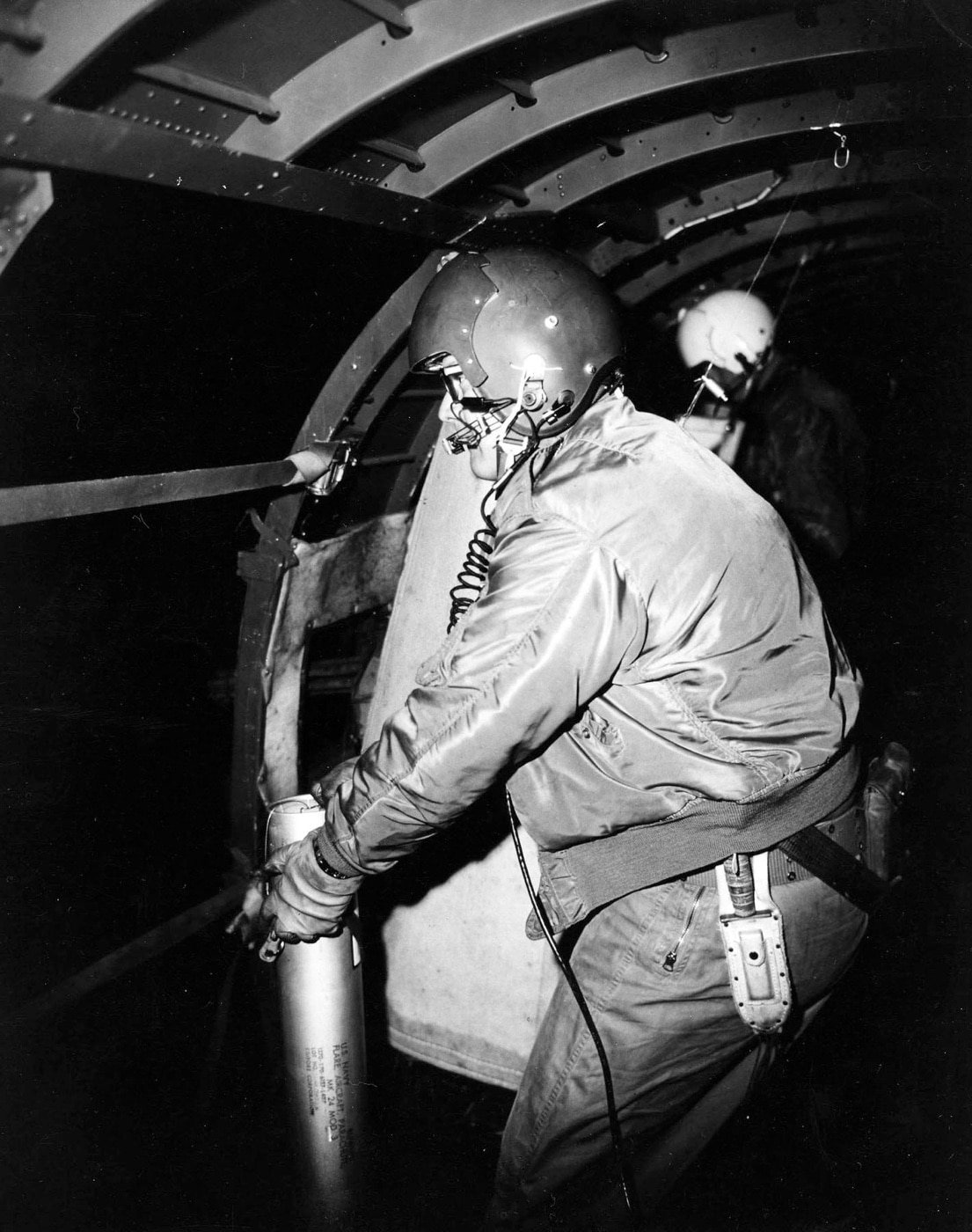
An AC-47 crewmember prepares to drop a flare out of the open fuselage door of the plane. These flares helped expose enemy night attacks. Image: U.S. Air Force
The operators behind Project Gunship outfitted two C-47 aircraft but then ran out of miniguns.
The GAU-2/A was a relatively new weapon, and everybody wanted them.
As a stopgap, the Gunship crews substituted tenAN/M2 .30-caliber Browning machineguns.
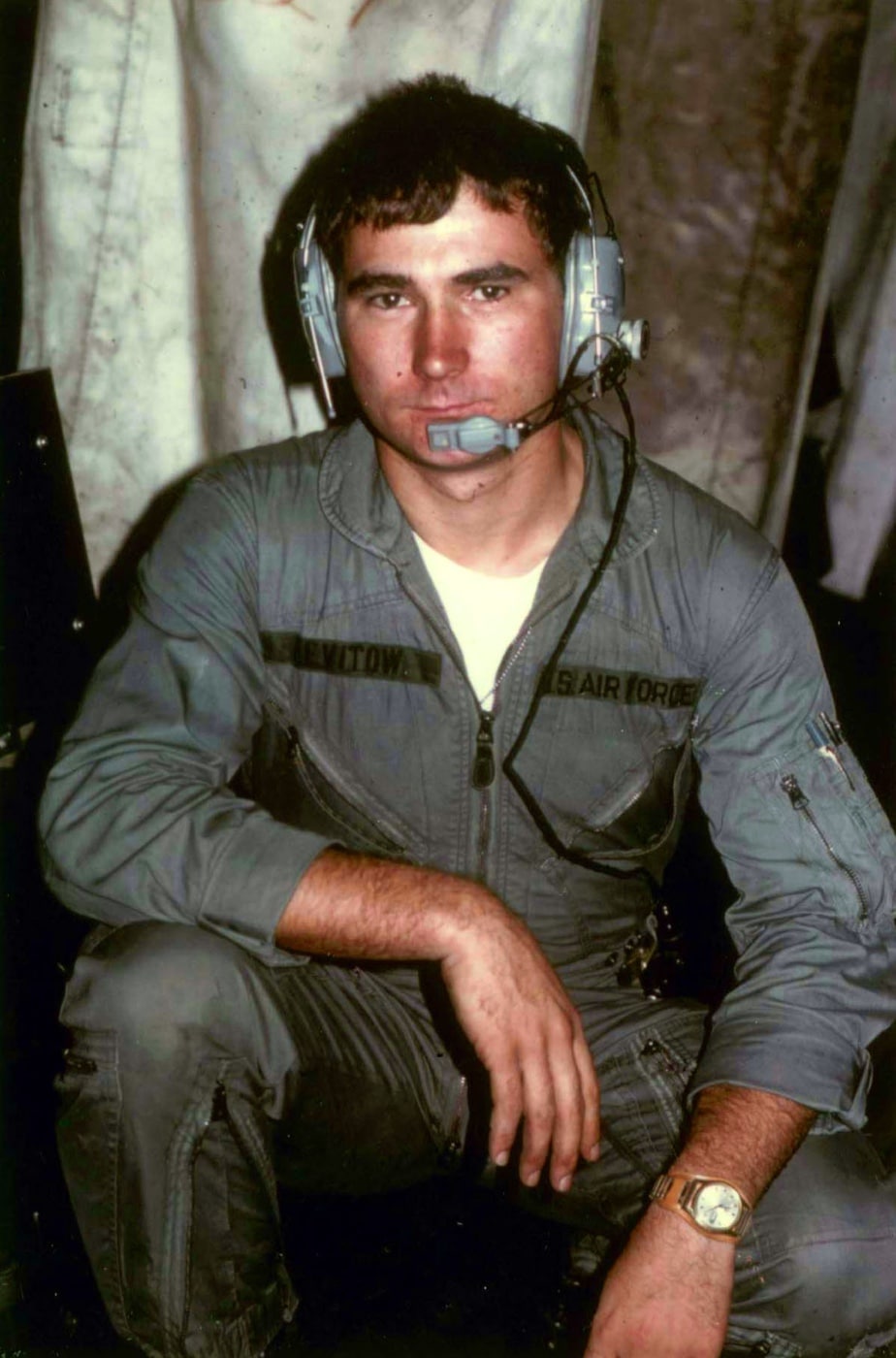
Airman 1st Class John Levitowreceived the Medal of Honorfor his heroic actions in an AC-47. After his plane was hit, he threw himself on an ignited flare in the fuselage. Image: U.S. Air Force
However, these recoil-operated weapons jammed frequently using the WWII and Korean War surplus ammo available at the time.
They also filled the main cabin with noxious fumes.
Additionally, these 10 conventional machineguns could only produce the fire density of a single minigun.
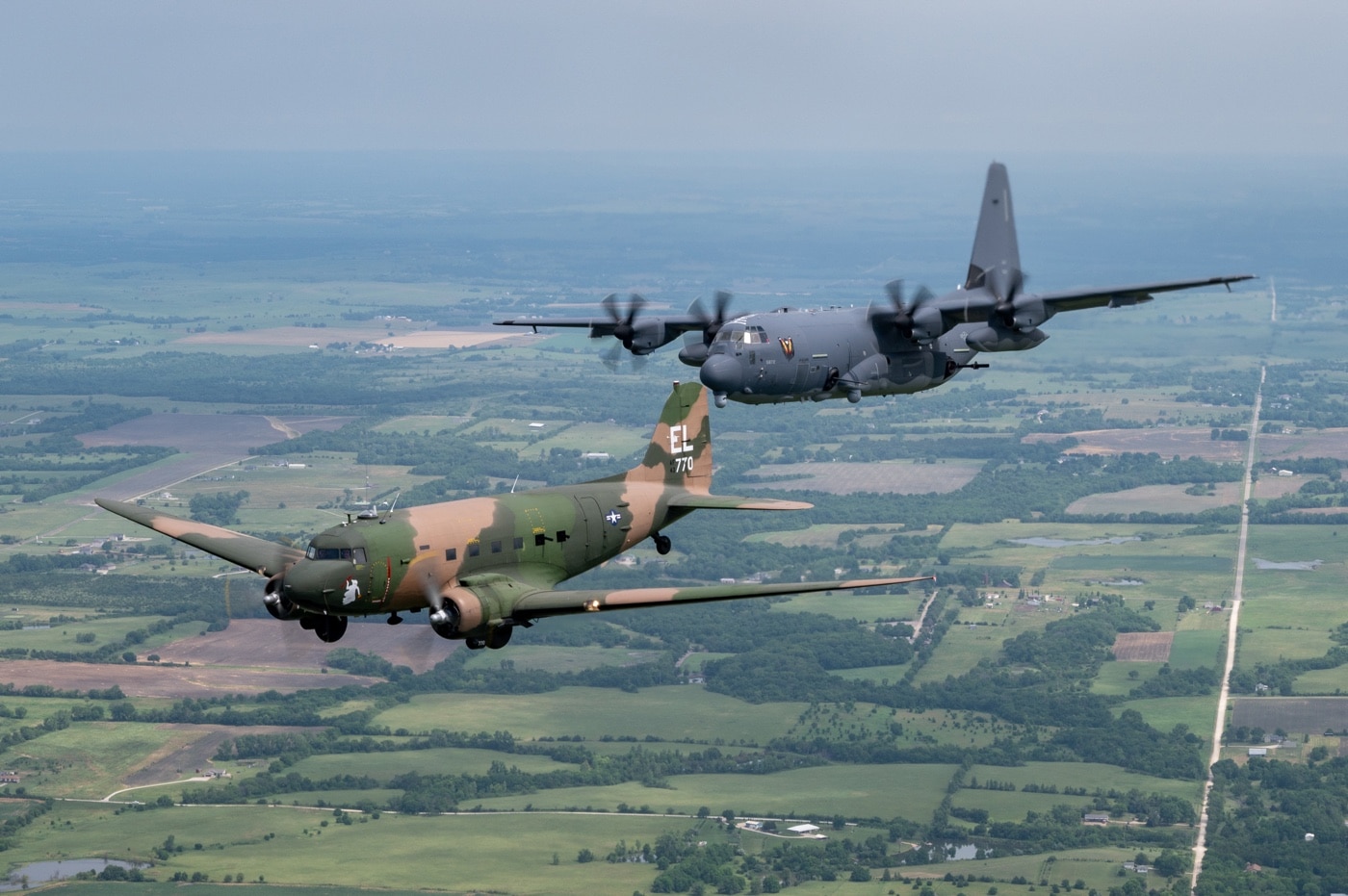
An AC-47 and an AC-130J Ghostrider fly in formation around Topeka, Kansas in June 2021 in preparation for a gunship legacy flight. Image: Master Sgt. Christopher Boitz/U.S. Air Force
The attack profile typically put the airplane in a left-hand orbit at 120 knots and 3,000 feet.
A skilled pilot could saturate every square yard of a football field-sized space in under 10 seconds.
The basic combat load was 45 flares and some 24,000 rounds of ammunition.
The plane itself could loiter on station for hours.
The AC-47 used the call sign Spooky.
Ground troops fell madly in love with the machines.
The AC-47 flew mostly at night to avoid ground fire.
Once the crews got synchronized with the supported troops, Puff turned into a proper monster.
The plane orbited above the battlefield for more than four hours and burned through 20,500 rounds.
A dozen were lost in combat.
The lessons learned in combat by the crews of the AC-47s eventually informed the development of theAC-130 Spectre.
Spectre remains at the very tip of the spear even today this deep into the Information Age.




